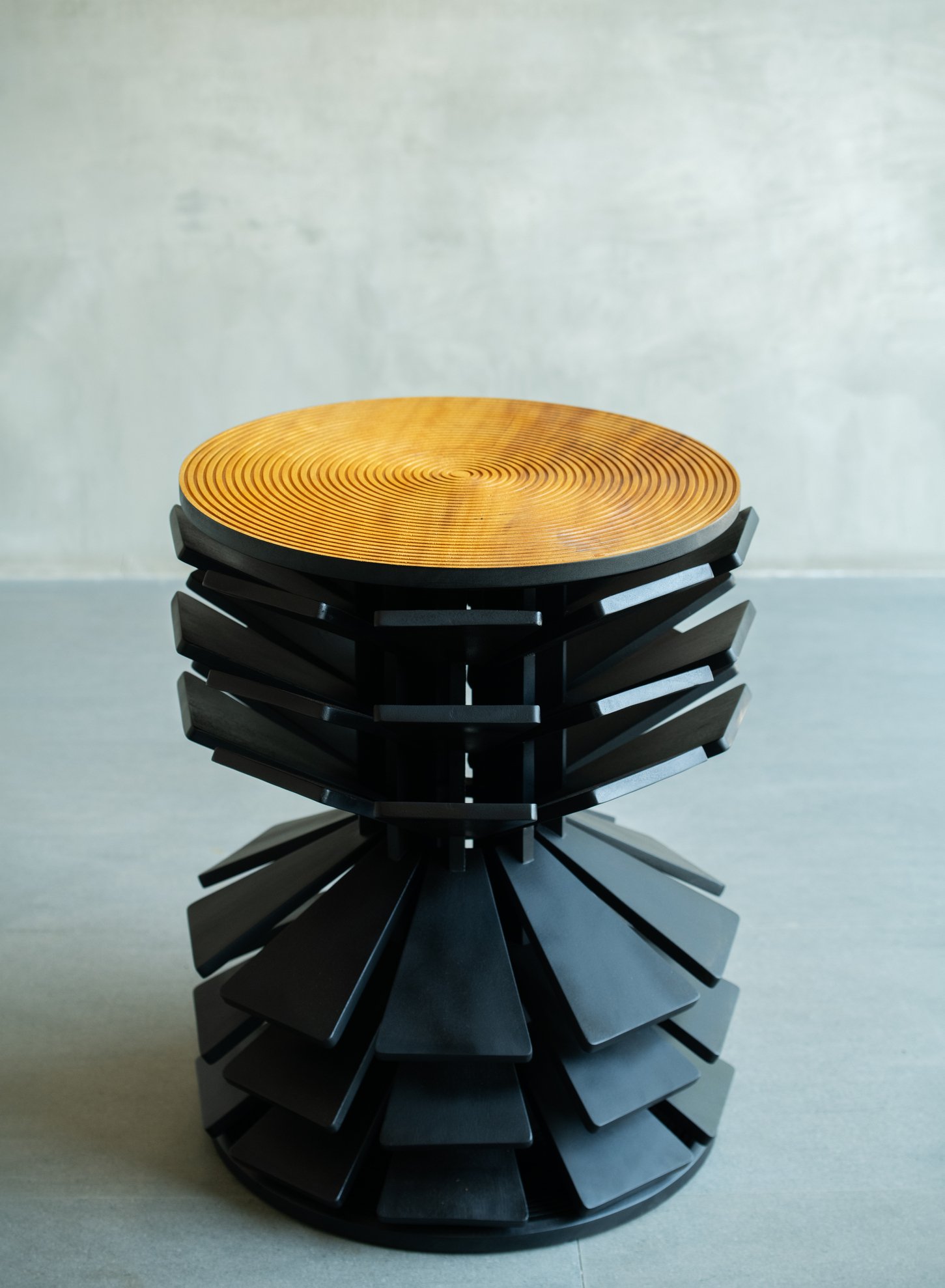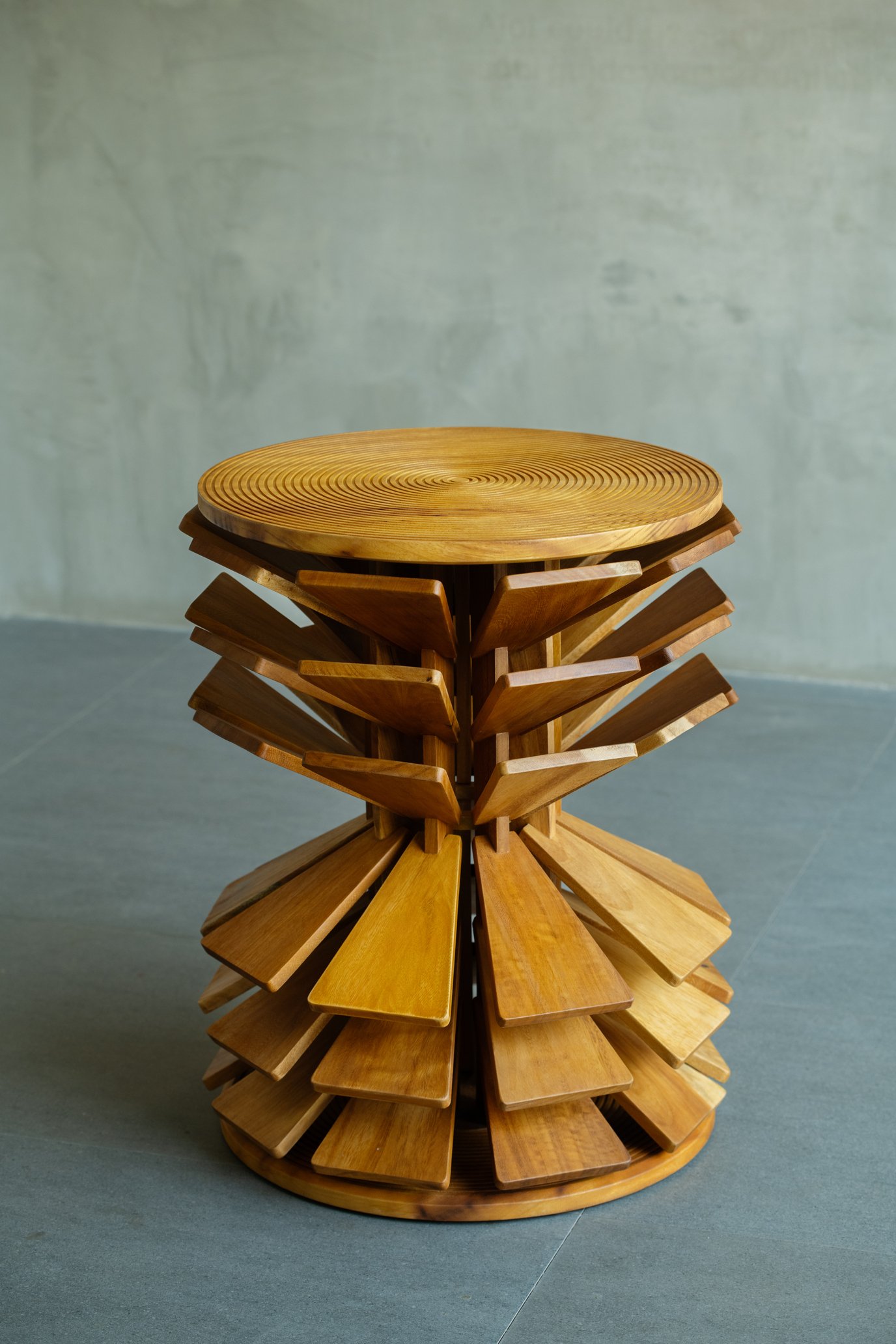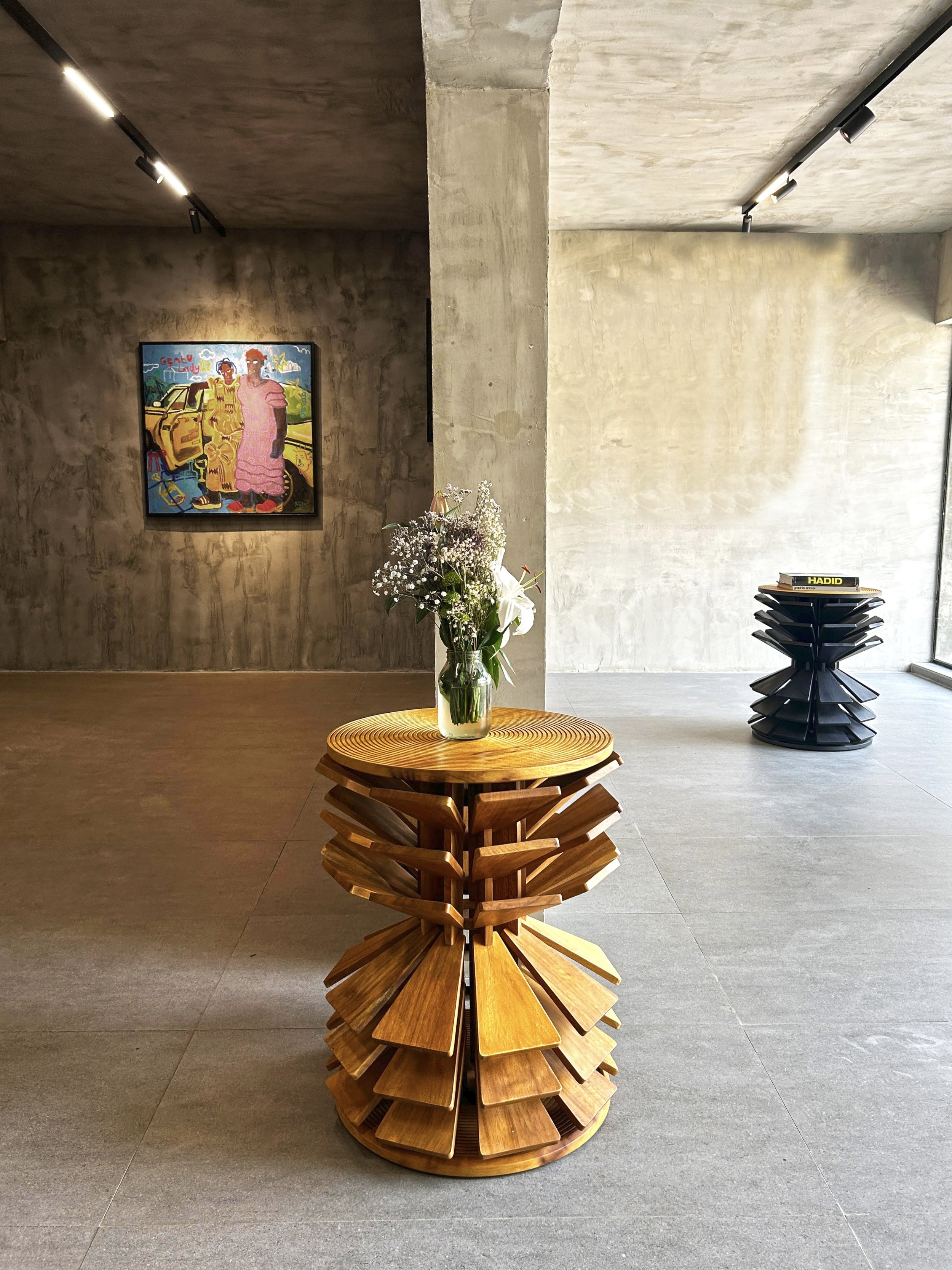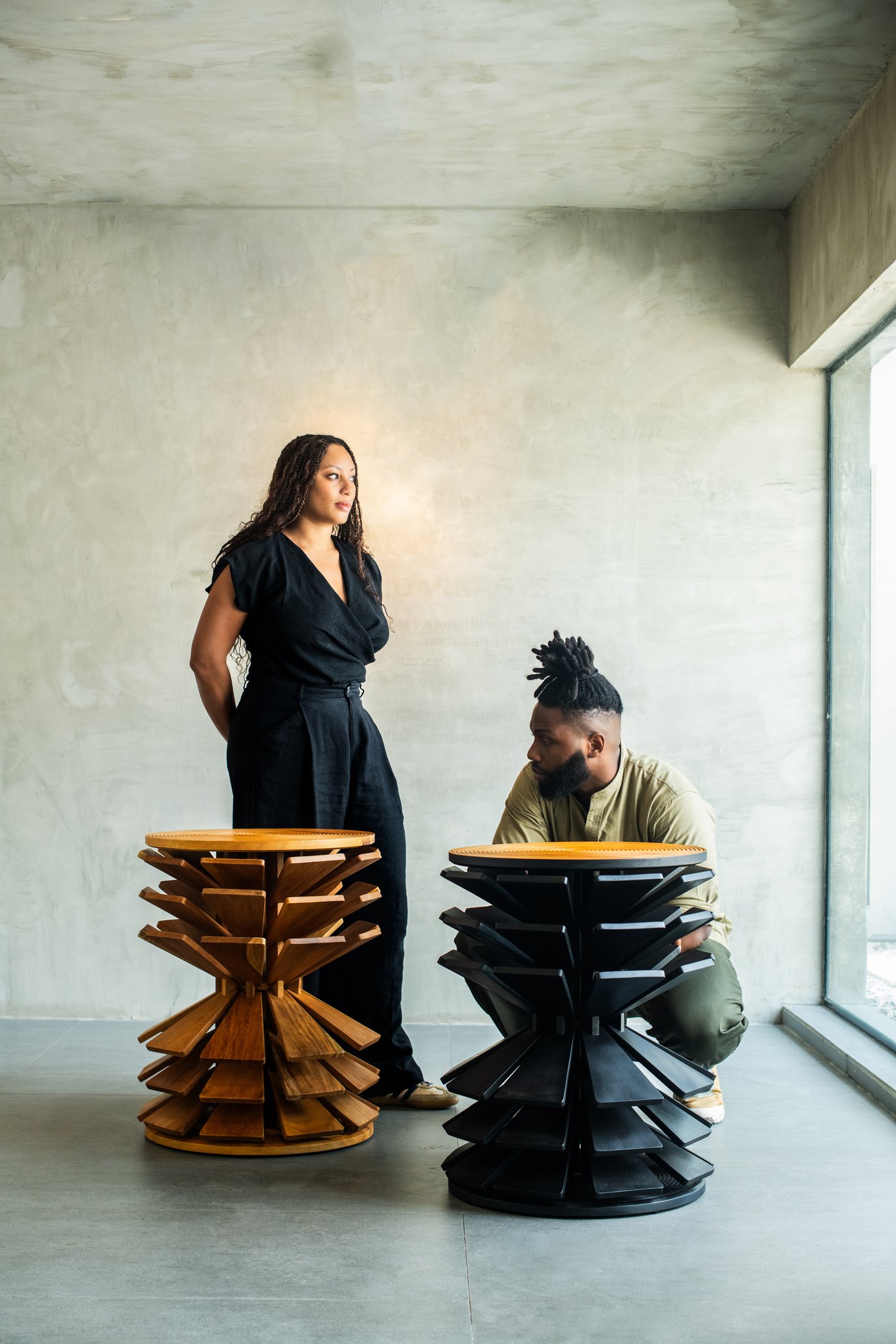Zangbeto Side Table.
This meticulously crafted wooden side table is a profound exploration of Benin's Zangbeto masquerade, a vibrant and deeply symbolic tradition representing guardianship, spiritual protection, and communal unity. Rooted in the cultural heritage of the Ogu (or Egùn) people, the Zangbeto masquerade is more than a performance—it is an intricate ritual that bridges the physical and spiritual worlds. This design not only translates the essence of the Zangbeto into functional art but also serves as a narrative vessel, inviting a deeper connection to West African traditions through contemporary design.
The Zangbetos embody the blend of spirituality, tradition, and communal unity that defines their role in Beninese culture. Their movements are a powerful visual and symbolic expression of their purpose as protectors and spiritual intermediaries. This ritual dance is said to be a transition between the physical and spiritual realms which reflects the cyclical nature of life, unity, and the interconnectedness of all things. This spinning movement echoes the belief in the perpetual flow of energy within the universe, a key concept in many African cosmologies.
The overall structure of the table is inspired by the iconic conical shape of the Zangbeto costumes, which are crafted from layers of cascading raffia. This conical silhouette is reinterpreted using layered wooden fins, arranged radially and in a spiraling configuration. These fins evoke the centrifugal energy and hypnotic motion of the Zangbeto’s spinning dances, creating a sense of perpetual rotation. The hand-carved tiers are meticulously crafted to simulate motion frozen in time, imbuing the static object with a dynamic, kinetic energy. The fins taper upward in a seamless gradient, balancing structural stability with visual elegance. This tapering design not only reflects the ascending movement of the Zangbeto’s dances but also creates an illusion of lightness, as though the table is levitating above the ground, and it also allows for the side table to double as a bookshelf with the angular configuration allowing for the support of the books. The intricate interplay of negative space between the fins further enhances this effect, allowing light to pass through and casting dynamic shadows that mimic the movement of the masquerade.
The tabletop design extends the narrative by incorporating carved spiral ridges that ripple outward from the center. These concentric patterns symbolize the energy pathways and vibrations generated by the Zangbeto’s ceremonial performances. The spirals also evoke the cosmic flow of energy and life, reinforcing the central themes of interconnectedness and cyclical renewal. This design detail invites tactile engagement, encouraging viewers to trace the carved paths and experience the story through touch as well as sight.
The alternating matte and polished finishes on the table’s surface reflect the interplay of light and shadow during Zangbeto ceremonies. This nuanced contrast creates a dynamic visual texture, echoing the way light dances across the raffia costumes during the ritual. The table’s natural wood grain further emphasizes its organic connection to the earth, grounding the piece in its materiality while celebrating its cultural roots.
The hand-carved details of the fins and tabletop speak to the meticulous craftsmanship involved in the piece’s creation. Each layer is shaped with precision, demonstrating a commitment to honoring the intricate artistry of the Zangbeto costumes and the spiritual significance they carry. The layering and radial arrangement of the fins also reflect a modern reinterpretation of traditional construction techniques, blending heritage with innovation.
This piece challenges viewers and users to engage with cultural narratives in a tangible and interactive way. It not only celebrates and honors the spirit of the Zangbeto as a cultural guardian but also demonstrates the potential of design to act as a medium for storytelling, education, and cultural preservation. Through its thoughtful design and rich symbolism, the table invites exploration of the interconnectedness of life, culture, and art, offering a modern lens through which to experience the traditions of West Africa.
Production: Lagos, Nigeria Year: 2025
Material: Iroko Wood (Neutral/Ebonized)
Dimensions: 70cm H x 54cm W x 54cm L












